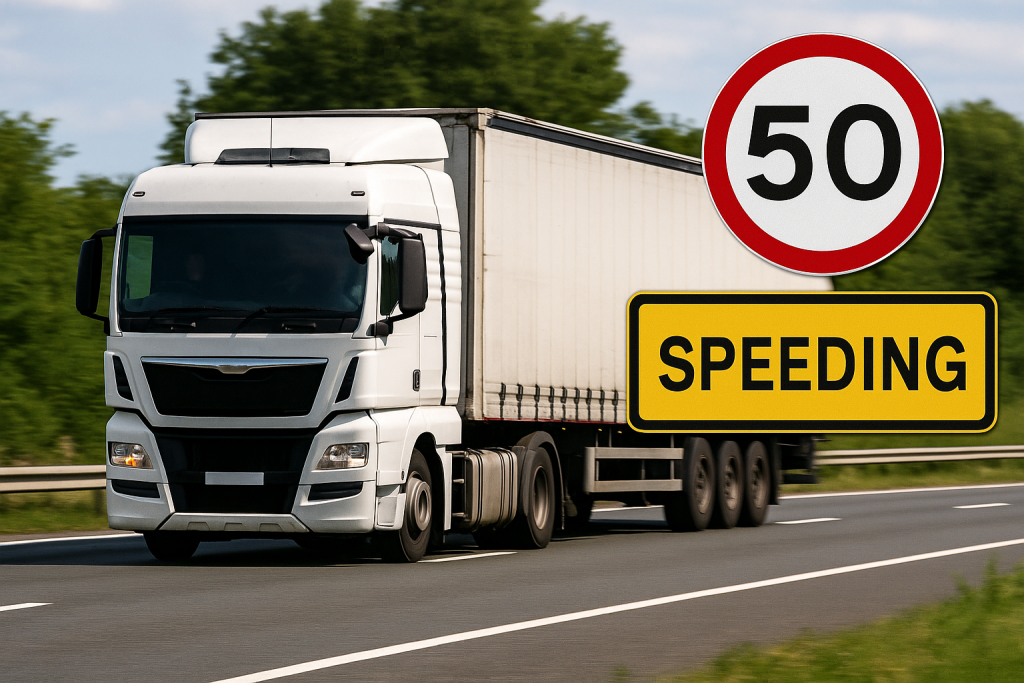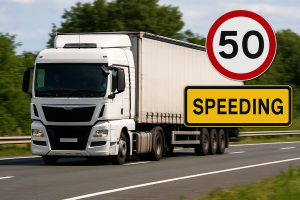
Transport Manager CPC Refresher 2025: Why Every TM Needs a 2-Day Update
Transport compliance has never been more scrutinised. In 2025, Traffic Commissioners made clear that professional competence is not optional — it’s a legal expectation. That’s
If you drive or manage Heavy Goods Vehicles (HGVs), knowing the correct speed limits is essential. These limits depend on the road type, the vehicle’s weight, and the part of the UK you’re driving in.
In 2015, England and Wales increased the speed limits for HGVs on certain roads — but Scotland didn’t follow suit. That means HGV drivers crossing the border need to be extra careful.
In this post, we’ll explain the current legal speed limits, how they differ across the UK, and what the DVSA can do if you get it wrong.
By law, an HGV is any vehicle used to carry goods with a gross weight over 3.5 tonnes. There are two categories:
This blog focuses on vehicles over 7.5 tonnes, as they’re subject to stricter speed limits.
In 2015, the Department for Transport increased the speed limits for HGVs in England and Wales. The current legal limits for vehicles over 7.5 tonnes are:
Source: DfT – Statutory Instrument 2015/410
Scotland did not adopt the 2015 changes. Instead, it kept the original lower limits:
Source: The Motor Vehicles (Speed Limits on Roads) Regulations 1996
Most HGVs over 3.5 tonnes must be fitted with a speed limiter set to a maximum of 56 mph (90 km/h).
An overspeed event happens when a vehicle travels faster than the limiter setting for more than 60 seconds.
Example:
These events are stored in the vehicle’s tachograph and reviewed by DVSA during checks or audits.
Repeated overspeed events can suggest:
These issues may impact your Operator Compliance Risk Score (OCRS).
DVSA may:
Exceeding the limiter for 60 seconds is enough to trigger enforcement — even if the road limit wasn’t broken.
If you cross from England into Scotland and don’t slow down, you could be breaking the law.
That’s a speeding offence, even if you didn’t realise you’d crossed the border.
HGV speed limits differ across the UK. Scotland still enforces stricter limits.
And if your vehicle exceeds its limiter — even if the road limit allows it — DVSA can take action.
Stay compliant. Know the law. Monitor overspeed events.


Transport compliance has never been more scrutinised. In 2025, Traffic Commissioners made clear that professional competence is not optional — it’s a legal expectation. That’s

“Too Tired to Drive?” Last updated: 21 August 2025 Drivers rarely want to say “I’m too tired to drive.” Some employers are happy

Updated: 15 August 2025 • Audience: Professional HGV & PCV drivers • Sources: National Highways, GOV.UK, Police & Traffic Commissioner reports Operation Tramline: What Every

HGV Speed Limits in the UK and Scotland Introduction If you drive or manage Heavy Goods Vehicles (HGVs), knowing the correct speed limits is

How to Become a Transport Manager in the UK: A Step-by-Step Guide for Professional Drivers If you’re a professional driver looking to become a Transport

Driving Hours Gone Wrong? The Legal Lifeline You Might Be Missing When driving hours go wrong — whether due to a breakdown, unexpected traffic,
|
Uploaded
Failed
|
 |